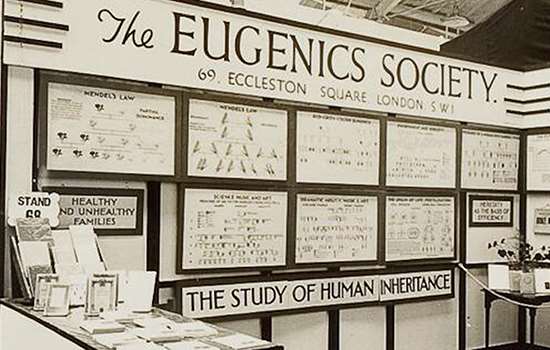RATHBONE, Eleanor (1872–1946)
Plaque erected in 1986 by Greater London Council at Tufton Court, Tufton Street, Westminster, London, SW1P 3QH, City of Westminster
All images © English Heritage
Profession
Social Reformer
Category
Philanthropy and Reform, Politics and Administration
Inscription
ELEANOR RATHBONE 1872-1946 Pioneer of Family Allowances lived here
Material
Ceramic
Eleanor Rathbone was a significant social reformer and feminist thinker. She pioneered family allowances – an early step in the development of the welfare state – and was living at 5 Tufton Court in Westminster when the legislation was presented to Parliament in 1945.
FROM LIVERPOOL TO LONDON
Rathbone first came to prominence in her native Liverpool, where she brought attention to the poverty of working mothers and the working conditions in the city's docks. In 1909 she was the first woman elected to Liverpool City Council, and she used her position to advocate social housing, better conditions for female employees and the right of women to vote.
In 1919 she succeeded Millicent Garrett Fawcett as president of the suffragist organisation the National Union of Societies for Equal Citizenship (NUSEC), and moved to London. She lived for many years at 50 Romney Street with her lifelong companion and fellow social reformer, Elizabeth Macadam (1871–1948). In 1940 they moved around the corner to 5 Tufton Court – a flat on the ground floor of a new, purpose-built seven-storey block – after the Romney Street house suffered severe bomb damage (the building was later demolished).
THE RIGHT TO VOTE
During Rathbone’s leadership of the NUSEC, the organisation claimed several significant victories, including the introduction of widows’ pensions in 1925 and the right to vote on equal terms with men in 1928. However, Rathbone’s promotion of a ‘new feminism’ – in which women’s values and needs were regarded as different from men’s – meant that by 1927 half the executive committee had resigned. The NUSEC subsequently declined in size and influence, but Rathbone soon found a new platform for her campaign work.
WESTMINSTER POLITICS
In 1929, she was elected to Parliament as an Independent MP for the Combined English Universities. Rathbone held the seat until her death, becoming one of the Commons’ most influential backbenchers. In addition to campaigning for women’s rights – both at home and in India, Palestine and Africa – hers was among the early voices raised against Nazi Germany. She was particularly active in her support of refugees, once trying to charter a ship to rescue republican sympathisers during the Spanish Civil War and later pressurising the government to liberate those held at Nazi concentration camps.
FAMILY ALLOWANCES
Meanwhile, Rathbone had been developing her argument in favour of state support for mothers and children – a cause close to her heart since the time she had spent with impoverished mothers in Liverpool. She published The Case for Family Allowances in 1940 and in 1942 the idea was taken up by William Beveridge in his comprehensive plan for social security. Finally in June 1945 the Family Allowances Bill was passed, an event since described as a ‘notable personal triumph in legislation’.
In April 1945 Rathbone and Macadam moved from 5 Tufton Street to 26 Hampstead Lane in Highgate, where Rathbone died suddenly in January the following year.
Nearby Blue Plaques
More about blue plaques
-

Eugenics in Britain
Find out more about the controversial and changing ideas about eugenics, and some of the figures with blue plaques who supported or opposed it.
-

Support the blue plaques scheme
Every blue plaque, from its research to unveiling, is funded by donations. Find out how you can help support the scheme.
-

Search for a Plaque
Use our search function to look for someone from history, or browse by category or location.